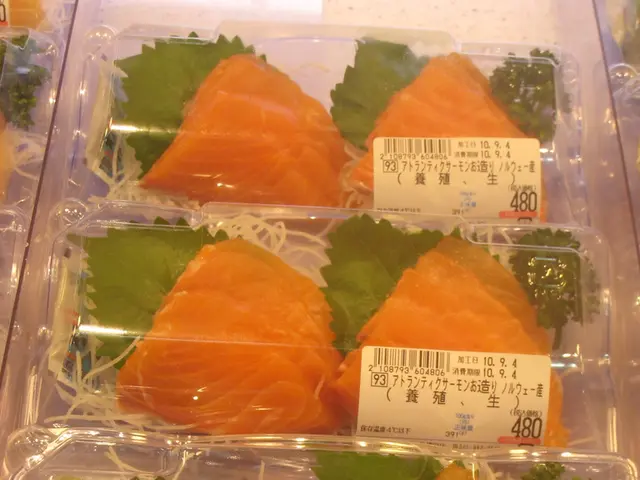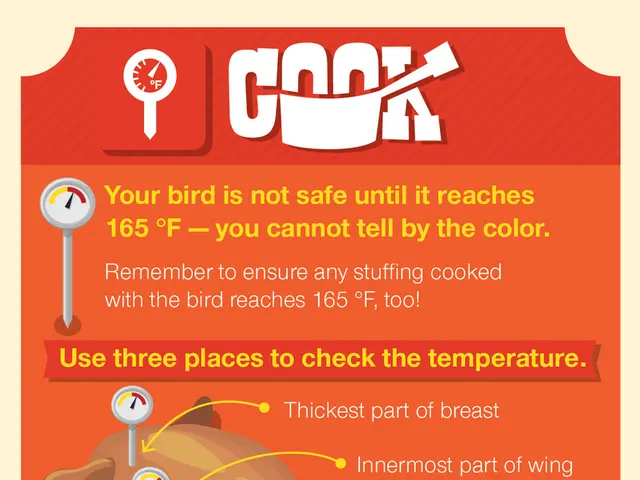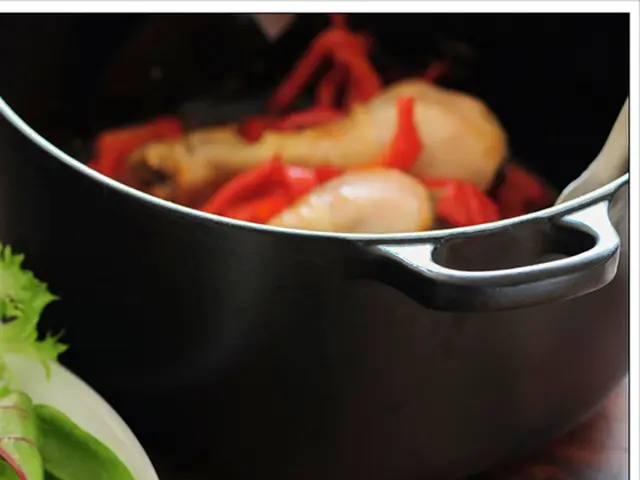Distinction in Food Preservation: Fermentation vs Pickling
Keeping your fruits and veggies fresh for long periods? Confused between canning or fermenting? Here's a lowdown on these preservation techniques to help you make an informed choice!
Both canning and fermentation are great options to preserve food safely over time. They have their unique advantages:
Curious about the basics? Skip ahead:
- How does pickling work?
- How does fermentation work?
- Comparing canning and fermentation
- Get the tools!
Preserving Fruit and Vegetables: The Basics
Preserving food involves shielding it from natural decay to keep its taste, nutrients, and other properties intact. Canning and fermentation are both accessible and easy to do at home.
Preserving fruits and veggies brings several advantages:
- Eating locally all year round
- Extending the harvest season
- Saving money by buying in bulk during the season
- Tasting the full flavor of fresh produce
Canning: Preserving with Heat
Canning is a process that sterilizes food using heat. You place the food in glass jars and treat them with boiling water to kill microorganisms, creating a sterile environment. This allows for storage at room temperature.
For acidic foods like fruit and pickles, a large pot of boiling water works great. However, for low-acid vegetables or fruits, an autoclave is recommended to sterilize at temperatures exceeding 116°C (240°F).
The heating process time varies depending on jar size, food type, and altitude. Always cross-check dependable sources for clear sterilization guidelines when canning.
Lacto-Fermentation: Preserving Naturally
Lacto-fermentation uses natural acidity, the absence of oxygen, salt, and healthy bacteria to preserve food. The acidity alone creates an environment hostile to pathogenic microorganisms, while beneficial bacteria (probiotics) thrive. Unlike canning, lacto-fermentation doesn't destroy - it creates!
Here's a simple breakdown of the process:
- Salt is added to the recipe.
- Good bacteria grow and produce lactic acid.
- The ensuing acidity protects against the development of pathogenic microorganisms.
- Salt and lack of oxygen slow down food spoilage.
- Good bacteria increase the nutritional quality of the food while protecting it from invaders.
Interested in visual learning? Check out our infographic on lacto-fermentation.
Is Pickling Fermentation?
No, pickling is not fermentation. While pickling involves vinegar and heat to kill microorganisms, fermentation uses natural bacteria to create lactic acid that keeps bad microorganisms at bay while improving the nutritional quality of the vegetables.
Comparing Pickling and Fermentation
Here's a comparison of these two preservation methods for fruit and vegetables:
Which is quicker to prepare?
Fermentation is simpler and quicker with fewer preparation steps than canning.
Which preserves more nutritional value?
Lacto-fermentation retains more nutritional value since it enhances the nutritional quality of food.
Which tastes better?
The flavor profiles of canned and fermented food are different. Canning emphasizes preserving flavors as they were, while fermented foods develop unique flavors and may become more refined over time.
Which preserves the best texture?
Canning maintains the texture of food better but can be influenced by user preference. Fermented foods may soften over time.
Which is safer?
Lacto-fermentation is safer since it does not present the same risks as canning, especially when dealing with low-acid foods.
Which offers better preservation?
Both canning and fermentation offer excellent preservation capabilities, albeit for different lengths of time.
Which requires the least equipment?
Lacto-fermentation requires fewer specialized pieces of equipment than canning.
In Summary
Choosing between canning or fermentation depends on your preferences and needs. Canning focuses more on preserving original flavors and textures but requires more equipment and effort and reduces some nutrients.
Lacto-fermentation enhances nutritional value, alters flavors, and increases probiotics but requires less effort and equipment. Get started with lacto-fermentation today!
Tools for Lacto-Fermentation
We recommend the following products for lacto-fermentation.
Get Started!
- Buy lacto-fermentation equipment
- How to Make Lacto-Fermentations (Complete Guide)
- Benefits of Lacto-Fermented Vegetables
- Discover lacto-fermented vegetables all year round!
- Fall lacto-fermented vegetables
- Winter lacto-fermented vegetables
- Spring lacto-fermented vegetables
- Summer lacto-fermented vegetables
[1] "Pickling" (n.d.). Retrieved from https://www.britannica.com/topic/pickling
[2] "Fermented food" (n.d.). Retrieved from https://www.britannica.com/topic/fermented-food
[3] "Canning" (n.d.). Retrieved from https://www.britannica.com/topic/canning
- Safety and nutritional benefits of food preservation methods are crucial for maintaining a healthy lifestyle. Both canning and fermentation are effective options, though they have distinct advantages.
- Canning, through its heat sterilization process, allows for longer storage at room temperature, preserving initial flavors and textures. On the other hand, lacto-fermentation allows for nutrient enhancement and gut-friendly probiotics, utilizing natural acidity, salt, and beneficial bacteria.
- For those interested in cooking, incorporating healthy-cooking techniques such as lacto-fermentation can be an exciting way to explore and enjoy various food-and-drink options, contributing to a balanced health-and-wellness lifestyle and delicious food-and-drink experiences.








